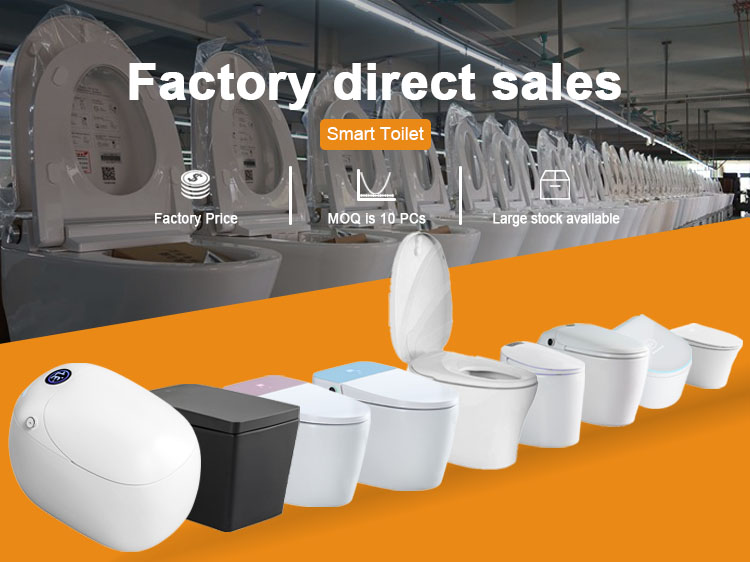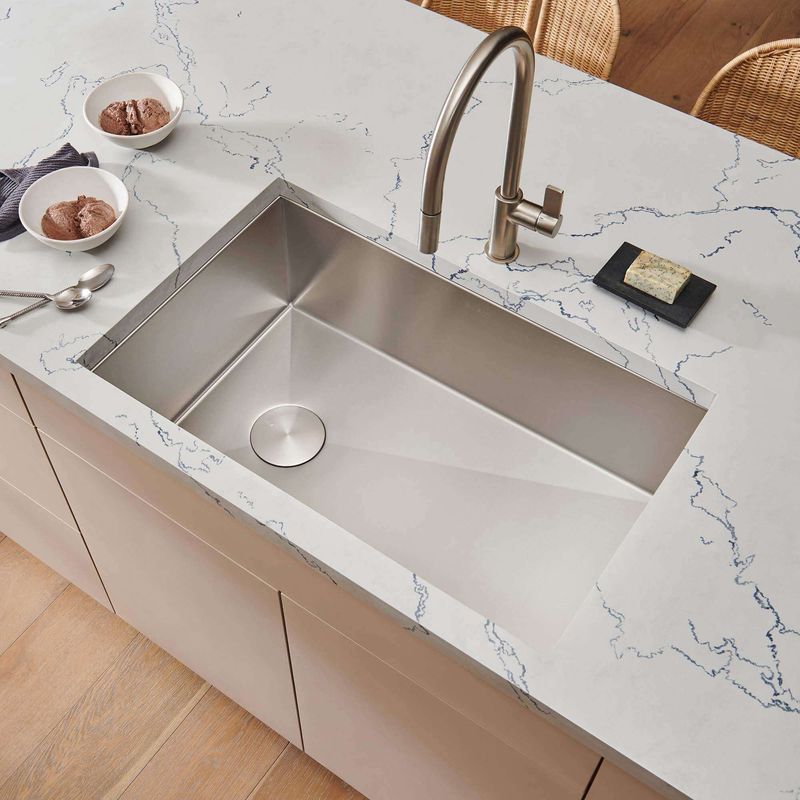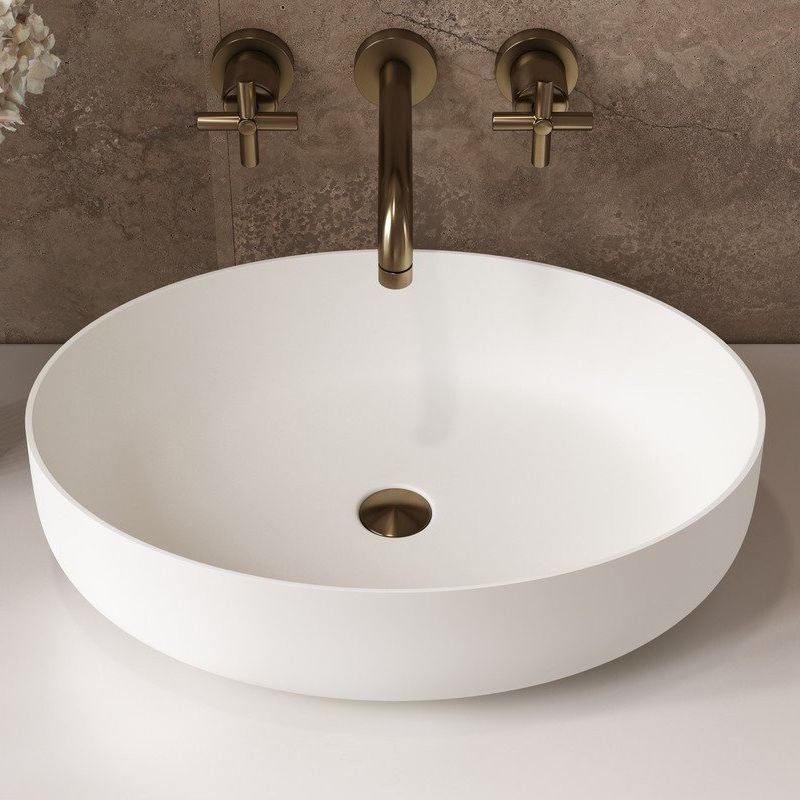 English
English
Jabra Sanitary is a sanitaryware supplier offering toilets, sinks, faucets, bathtubs, etc., at competitive prices. If you're a distributor, wholesaler, or project contractor, get a quote today!
 $23.9 Limited-time Offer
$23.9 Limited-time Offer Consignment Policy
Consignment Policy 20 Years of Experience
20 Years of Experience
When upgrading your bathroom, one of the most modern and stylish options is the wall-hung toilet. Wall hung toilets pros and cons? We will cover all you want to know.
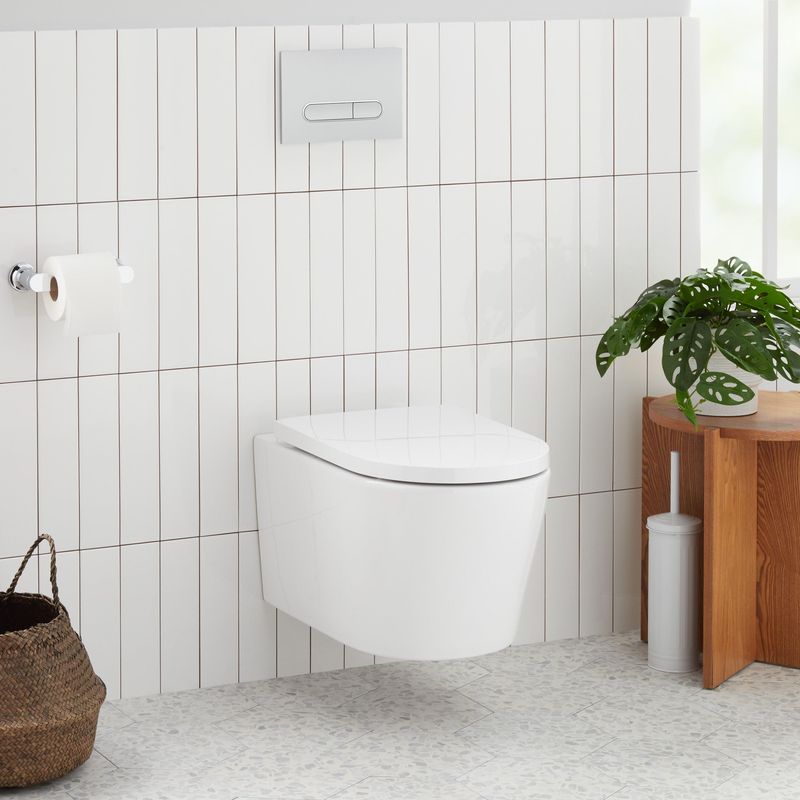
Table of Contents
What Are Wall-Hung Toilets?
Pros of Wall-Hung Toilets
Cons of Wall-Hung Toilets
Are Wall-Hung Toilets Right for You?
Wall-Hung vs. Floor-Mounted Toilets
Alternatives to Wall-Hung Toilets
Best Wall-Mounted Toilets: Brands and Models
FAQs
Wrapping-Up
What Are Wall-Hung Toilets?
A wall-hung toilet, also known as a floating toilet, is a modern type of toilet that is mounted directly onto the wall. A wall-hung toilet is supported by a concealed frame inside the wall, leaving the floor area beneath it completely open.
This not only creates a sleek, minimalist look but also provides functional benefits that make cleaning and maintenance a breeze.
Pros of Wall-Hung Toilets
Wall-hung toilets bring several advantages to the table, making them an appealing choice for many homeowners. Let's take a closer look at these benefits:
Space-Saving Design
One of the standout features of wall-hung toilets is their ability to save space. Since the toilet bowl is suspended from the wall, it eliminates the need for a bulky base on the floor, leaving your bathroom feeling more open and airy. This makes them a fantastic choice for small bathrooms or powder rooms where every inch counts.
Easy to Clean
Since wall-hung toilets are suspended off the floor, it's much easier to clean underneath them. No more scrubbing around awkward corners or worrying about the buildup of grime under the toilet base. Simply sweep and mop beneath the toilet for a hassle-free cleaning experience.
More Hygiene Due to Off-the-Ground
Wall-hung toilets promote better hygiene in your bathroom. By raising the toilet off the ground, they reduce the chances of mold or bacteria accumulating at the base.
This design helps keep your bathroom cleaner, as it minimizes contact between the toilet and potentially dirty bathroom floors.
Compliance With Building Codes
Wall-hung toilets are designed to comply with modern building codes and regulations. They can be an excellent choice if you're renovating or building a new bathroom and want to ensure your bathroom fixtures are up to code.
With proper installation, wall-hung toilets meet both functional and aesthetic standards required in many regions.
Modern and Sleek Appearance
If you're aiming for a contemporary or minimalist bathroom design, a wall-hung toilet can serve as a statement piece. The floating design gives your bathroom a sophisticated, streamlined look.
Its clean lines and sleek design are perfect for those who value aesthetics as much as functionality.
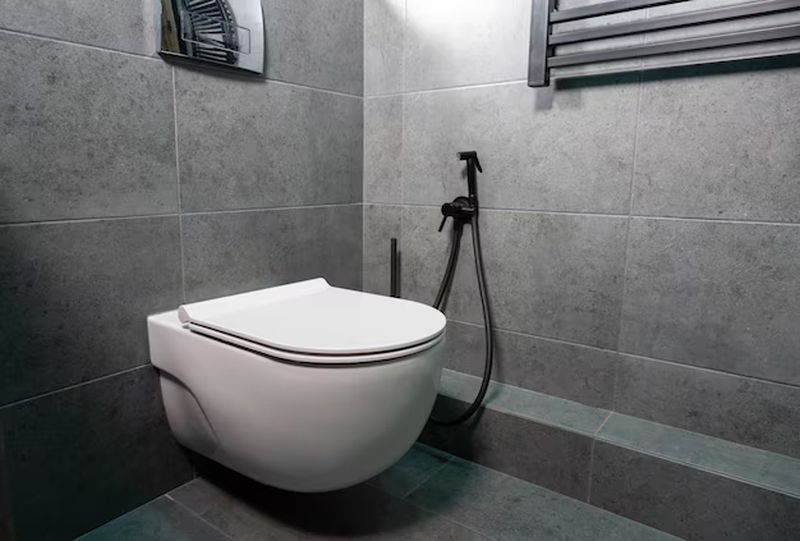
Installation Flexibility
A wall-hung toilet offers installation flexibility because it can be mounted at various heights on a wall. It allows for customization to suit individual needs and bathroom layouts.
In contrast, with floor mounted toilets, you are limited to standard or ADA height.
Efficient Flushing With a Delayed Action Inlet Valve in the Cistern
Wall-hung toilets often feature more advanced flushing mechanisms, like the delayed action inlet valve in the cistern. This technology helps improve flushing efficiency by reducing water waste and ensuring each flush is powerful and thorough.
A more efficient flush not only saves water but can also enhance the overall performance of the toilet.
Cons of Wall-Hung Toilets
While wall-hung toilets come with many advantages, it's essential to consider the disadvantages as well. Let's explore some of the cons of wall-hung toilets to help you make an informed decision.
Higher Cost
One of the most significant disadvantages of wall-hung toilets is their higher initial cost. These toilets tend to be more expensive than traditional floor-mounted models.
The reason for this is that they require a special frame to support the toilet, as well as installation costs that are generally more complex and labor-intensive.
Weight Limits
Since wall-hung toilets are supported by a frame mounted within the wall, they have certain floating toilet weight limits. This can be a concern if you have a large family or anticipate heavy usage.
The structural integrity of the wall and framing is key to supporting the toilet's weight. Any excess load could potentially damage the toilet or the wall.
Hard to Access the Tank
Unlike traditional toilets where the tank is easily accessible, the tank in a wall-hung toilet is concealed inside the wall. While this adds to the sleek aesthetic, it also makes the tank harder to access if there's a problem. If there are issues with leaks, you can remove the flush plate.
If the leak is coming from a connection behind the wall, you might need to access the system through a dedicated access panel or potentially open up the wall to reach the leak. This can lead to more time-consuming and expensive repairs.
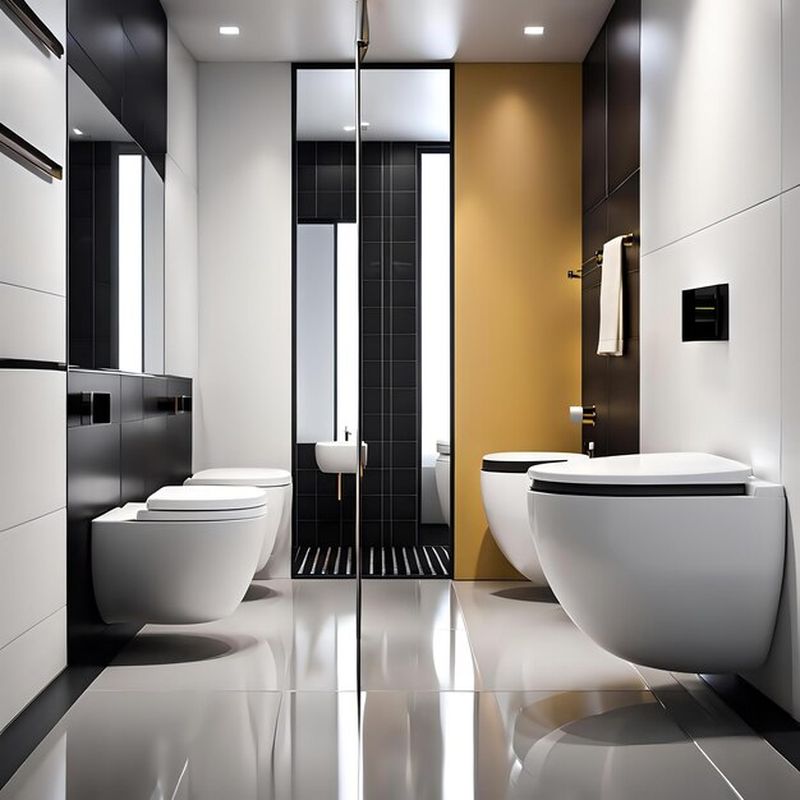
Difficult to Install and More Labor Cost
Installing a wall-hung toilet requires more expertise and labor than installing a floor-mounted toilet.
Since the toilet is mounted on a frame that is built into the wall, the installation process is more complex and time-consuming. It may also involve additional plumbing work to accommodate the hidden cistern.
As a result, installation costs tend to be higher, and you may need a professional plumber or contractor to ensure the job is done correctly.
May Not Be Suitable for All Types of Projects
Wall-hung toilets are not always compatible with every type of bathroom setup or remodeling project. For instance, if you have an older home with masonry walls or a structure that is not suitable for mounting a toilet frame, installation could be difficult or even impossible.
Additionally, wall-hung toilets work best in bathrooms with a standardized layout. So they may not fit well in small, unconventional spaces or awkwardly shaped rooms.
Bidet Attachments Installation Difficulties
Adding a bidet attachment to a wall-hung toilet can be a bit tricky. Since wall-hung toilets have a concealed cistern and specialized plumbing, installing a bidet or integrating other accessories might be more complicated than with traditional toilets.
This could involve additional plumbing or modifying the installation, which increases both time and cost.
Potential for Additional Maintenance Costs
While wall-hung toilets are generally durable, the specialized installation and hidden components mean they can require more maintenance over time. Repairing or replacing parts inside the concealed cistern can be a more expensive and labor-intensive process. Moreover, if the wall frame or plumbing becomes damaged, the costs to fix these issues can quickly add up.
Need to Build a New Framing When Replacing
If you are replacing an old wall-hung toilet with a new one, you may need to build a new framing to support the new toilet. This can be especially true if the old framing has become damaged or is incompatible with the new toilet model. Rebuilding the framing adds additional cost and labor to the installation process.
Even a Properly Installed Toilet May Need Adjustment
Even after a wall-hung toilet is installed correctly, it may require occasional adjustments. Over time, the toilet could shift slightly.
You may need to adjust the height or alignment to maintain its proper function. This is more common in bathrooms with high traffic or older installations and can lead to extra maintenance efforts to keep everything functioning smoothly.
Are Wall-Hung Toilets Right for You?
Now that we've looked at the pros and cons of wall-hung toilets, the next step is to consider whether this option is the right fit for your bathroom needs. Here are some key factors to help you decide if a wall-hung toilet is the right choice for you:
Installation Considerations
Installing a wall-hung toilet is more involved than installing a traditional floor-mounted model. The toilet is supported by a frame that's mounted into the wall, and the installation requires careful planning and precise execution. Here's what you should think about:
- Wall Structure: The wall where the toilet will be mounted needs to be strong enough to support the toilet's weight. If your bathroom has drywall or a weak wall structure, additional reinforcement may be necessary.
- Plumbing: Wall-hung toilets require specific plumbing setups to ensure proper drainage and water supply. Make sure your existing plumbing can accommodate the new system.
- Professional Installation: While some homeowners may attempt the installation themselves, it's recommended to hire a professional plumber for the job. The complexity of the setup, especially the hidden cistern and concealed parts, makes it a more specialized task than traditional toilet installation.
Cost Analysis: Wall-Hung Toilets
While wall-hung toilets offer modern design and convenience, they come with a higher price tag. The total cost will depend on several factors, including:
- Toilet Model: Some wall-hung toilets are more expensive than others. High-end models with features like efficient flushing systems or sleek designs will naturally cost more.
- Installation: As mentioned earlier, installation costs for wall-hung toilets are higher because the process is more complex. You may need to budget for a plumber and possibly a contractor to reinforce the wall and handle any necessary plumbing adjustments.
- Maintenance: While wall-hung toilets are generally low-maintenance, the specialized nature of the components could lead to higher repair costs if issues arise.
Cleaning and Maintenance Tips
If you're someone who values low-maintenance cleaning, wall-hung toilets can be a great choice. Because they're mounted off the ground, cleaning the floor underneath is a breeze. Here are some maintenance tips to keep your wall-hung toilet in great condition:
- Regularly check for leaks: Since the cistern is hidden inside the wall, it's essential to check for any water leaks or damage regularly. If you notice any issues, address them immediately to avoid costly repairs.
- Clean the frame: While the toilet itself is easy to clean, don't forget the frame that supports it. Make sure to wipe it down regularly to prevent dirt buildup.
- Flush system: Check the flush system periodically to ensure it's working efficiently.
Wall-Hung Toilet Design and Aesthetics
A wall-hung toilet can dramatically enhance the look of your bathroom. Its sleek, minimalist design creates an open, airy feel by leaving the floor exposed.
Height and Ergonomics
Wall-hung toilets can adjust the height of the seat itself. The flexibility to adjust the height can improve comfort, making wall-hung toilets a great choice for families and people with specific ergonomic needs.
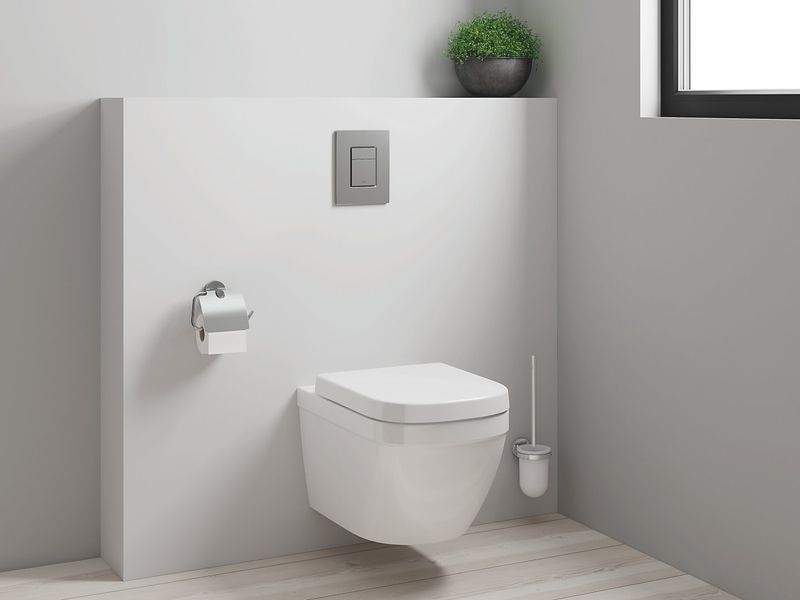
Weight and Structural Considerations
As mentioned earlier, wall-hung toilets require careful consideration of floating toilet weight limits and wall structure. It's important to assess whether your bathroom can support the weight of a wall-hung toilet. Factors like the strength of the wall, the type of material, and the weight of the toilet itself should all be factored into your decision.
Wall-Hung vs. Floor-Mounted Toilets
When deciding on the perfect toilet for your bathroom, it's important to compare the two main types: wall-hung toilets and floor-mounted toilets. While both serve the same basic function, they differ in design, installation, maintenance, and overall aesthetic appeal.
Below is a comparison chart that looks at the key features of wall-hung and floor-mounted toilets.
Feature |
Wall-Hung Toilets |
Floor-Mounted Toilets |
|---|---|---|
Appearance |
Sleek, modern, and minimalist; floating design |
Traditional, solid look. The base sits on the floor |
Cleaning |
Easier to clean under and around; less surface area for dirt to gather |
Harder to clean around the base due to the fixed structure |
Installation |
More complex and requires professional installation |
Easier to install, often DIY-friendly |
Cost |
Higher initial cost for the toilet and installation |
Lower upfront cost, both for the unit and installation |
Space-Saving |
Great for small bathrooms due to the open space beneath |
Take up more floor space, which may be an issue in compact areas |
Height Customization |
Adjustable height, great for comfort and accessibility |
Standard height with no customization |
Alternatives to Wall-Hung Toilets
While wall-hung toilets offer a modern design and a space-saving solution, they might not be the right choice for everyone. Fortunately, there are several alternatives that can suit different needs, preferences, and bathroom styles.
We'll take a closer look at some popular alternatives to wall-hung toilets: one-piece toilets, two-piece toilets, and bidet toilets.
One-Piece Toilets
A one-piece toilet combines the tank and bowl into a single, seamless unit. This type of toilet is a great option for those who want a sleek design but don't want the complexity of installing a wall-hung model.
Pros of One-Piece Toilets:
- Easy to clean: The lack of seams between the tank and the bowl makes cleaning much easier than traditional two-piece toilets.
- Space-saving: One-piece toilets are still more streamlined than many two-piece models, offering a cleaner look and taking up less space.
- Durability: Since it's a single unit, there's no risk of the tank and bowl separating or causing alignment issues.
Cons of One-Piece Toilets:
- Heavier: One-piece toilets tend to be bulkier and heavier, which can make installation more challenging.
- Higher upfront cost: These toilets can be more expensive than traditional two-piece models due to their seamless design and construction.
Overall, a one-piece toilet is an excellent alternative to wall-hung toilets if you want a stylish, easy-to-maintain unit that requires less installation effort.
Two-Piece Toilets
A two-piece toilet is the most common type of toilet. It features a separate tank and bowl that are joined together during installation.
Pros of Two-Piece Toilets:
- Affordable: Two-piece toilets are generally less expensive than both wall-hung and one-piece toilets, making them a budget-friendly option.
- Easy to repair: If something goes wrong with the tank or bowl, repairs are straightforward since both pieces are separate and easily accessible.
- Variety of styles: Two-piece toilets come in many different designs, from traditional to modern, allowing for a wide range of aesthetic choices.
Cons of Two-Piece Toilets:
- More difficult to clean: The space between the tank and bowl can accumulate dirt and grime, making cleaning a bit more of a hassle.
- Takes up more space: Compared to wall-hung and one-piece toilets, two-piece models are generally bulkier and take up more floor space.
Two-piece toilets are a good choice if you're looking for a reliable, cost-effective toilet option. While they take up more space and require a bit more cleaning, they remain the standard for many homeowners.
Bidet Toilets
In recent years, bidet toilets have gained popularity for their added comfort, hygiene benefits, and eco-friendliness. A bidet toilet combines traditional toilet features with a built-in bidet system, allowing for personal hygiene through water cleaning after use.
Pros of Bidet Toilets:
- Improved hygiene: Bidets provide a more thorough clean compared to toilet paper alone, promoting better hygiene and skin health.
- Eco-friendly: By reducing the need for toilet paper, bidet toilets are an environmentally friendly option.
- Comfort: Many bidet toilets come with features like heated seats, adjustable water pressure, and air dryers, making them an incredibly comfortable and luxurious option.
Cons of Bidet Toilets:
- Higher upfront cost: Bidet toilets can be significantly more expensive than traditional toilets due to the added technology and features.
- Complex installation: Installing a bidet toilet may require professional assistance, as it involves electrical connections and water supply modifications.
- Require space: Bidet toilets tend to be bulkier. So they may not be ideal for very small bathrooms or spaces with limited room.
Bidet toilets are perfect for those who want the ultimate in comfort, hygiene, and eco-friendliness. However, the initial investment and installation complexity can be higher compared to other toilet types.
Best Wall-Mounted Toilets: Brands and Models
If you've decided that a wall-mounted toilet is the right choice for your bathroom, the next step is selecting the perfect model. Here are some of the best wall-mounted toilets that combine aesthetics, efficiency, and reliability:
American Standard Glenwall 1.28 GPF VorMax Flush Wall-Mounted Toilet
The American Standard Glenwall 1.28 GPF VorMax Flush Wall-Mounted Toilet is a top pick for those seeking a high-efficiency, powerful flush system.
With its VorMax flushing technology, this toilet delivers a cleaner, more efficient flush that uses less water. It's designed to reduce water usage while still offering exceptional performance.
Key Features:
- Water-saving technology: Uses only 1.28 gallons per flush (GPF), helping conserve water without sacrificing performance.
- VorMax flush: The specialized flush system ensures a cleaner bowl with every use, reducing the need for frequent cleaning.
- Easy installation: The toilet is compatible with most standard wall frames, making installation relatively straightforward.
- Sleek, modern design: The sleek, floating design enhances the bathroom's aesthetic.
Kohler Veil Elongated Wall Hung Toilet with Actuator Plate
The Kohler Veil Elongated Wall Hung Toilet with Actuator Plate is an elegant and high-performing model known for its exceptional flush efficiency and aesthetic appeal. With its modern actuator plate and elongated bowl design, it provides a comfortable and stylish addition to any bathroom.
Key Features:
- Elongated bowl design: Offer more comfort and space for users.
- Dual-flush technology: Provide a choice between 1.28 GPF and 0.8 GPF, giving users the option to conserve water or get a more powerful flush.
- Slim actuator plate: The actuator plate is slim and easy to use. It offers a sleek design that matches the modern aesthetic of the toilet.
- Durable construction: Kohler is known for its high-quality products, and this toilet is built to last.
Jabra Sanitary Matt Black Wall Hung Rimless Toilet 505
For those looking for a unique and stylish design, the Jabra Sanitary Matt Black Wall Hung Rimless Toilet 505 offers a modern, bold aesthetic. Its rimless design allows for a more efficient flush, and the matte black finish gives your bathroom a sophisticated edge.
Key Features:
- Rimless design: Offer a cleaner, more efficient flush, as water flows directly into the bowl with no rim to trap debris.
- Matt black finish: Give your bathroom a contemporary, stylish look that works well with modern décor.
- Easy to clean: The absence of a rim makes cleaning and maintaining the toilet easier and faster.
- Comfortable seating: The elongated bowl provides extra comfort for users.
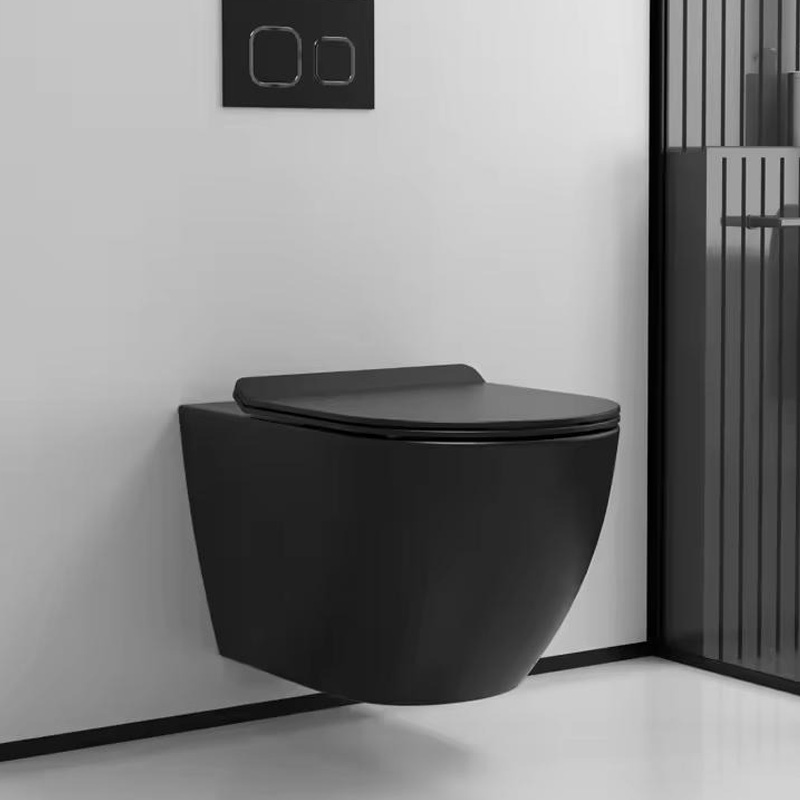 Ads
Ads
Matt Black Wall Hung Rimless Toilet
Introducing the black wall hung toilet 505 Black, a stylish and efficient choice for modern bathrooms. Certified by Australia's WaterMark for exceptional water efficiency, this black wall mounted toilet is designed for durability, having undergone 500,000 flushes in rigorous testing.
FAQs
When considering a wall-hung toilet, there are several common questions. In this section, we've gathered the most frequently asked questions to help you make a more informed decision.
Are wall-hung toilets quieter?
Yes, wall-hung toilets tend to be quieter compared to traditional floor-mounted toilets. This is because the water tank reduces noise levels when flushing.
Additionally, the absence of the toilet's base on the floor minimizes vibrations, resulting in a quieter operation.
How do you secure a wall-hung toilet?
Securing a wall-hung toilet requires a specially designed frame that is anchored into the wall. The frame supports the toilet, and the toilet bowl is attached to it.
Professional installation is recommended to ensure that the frame is properly installed and that the toilet is securely fixed to the wall.
What is the load capacity of a wall-mounted toilet?
The load capacity of a wall-mounted toilet varies depending on the model and the strength of the wall structure. Most wall-hung toilets are designed to support weights up to 500 lbs (227 kg) or more when installed properly.
Are wall-hung toilets suitable for small bathrooms?
Yes, wall-hung toilets are a great choice for small bathrooms. The space-saving design of wall-hung toilets allows for more open floor space underneath, which can make the bathroom appear larger and more spacious.
Additionally, wall-hung toilets offer flexibility in installation height, which can help optimize space and comfort in tight areas.
How high should a wall-hung toilet be off the floor?
The standard height for a wall-hung toilet is typically between 15 to 19 inches from the floor to the rim of the toilet seat.
However, one of the biggest advantages of a wall-hung toilet is its adjustable height. Depending on your preference and the needs of the users, you can adjust the height to suit everyone.
Wrapping-Up
With any major home upgrade, it's important to weigh the pros and cons based on your individual needs. If you're looking for a more efficient, stylish, and easy-to-clean option, and you're willing to invest in installation and occasional maintenance, a wall-hung toilet could be the perfect fit for your home.
On the other hand, if you're on a tighter budget or need a simpler installation process, other alternatives like one-piece or two-piece toilets might be more suitable.
Ready to Upgrade Your Bathroom? Feel free to request a quote. Jabra Sanitary is here to help you find the perfect solution for your bathroom needs. No one understands wall hung toilet advantages and disadvantages as we do—choose the best.







